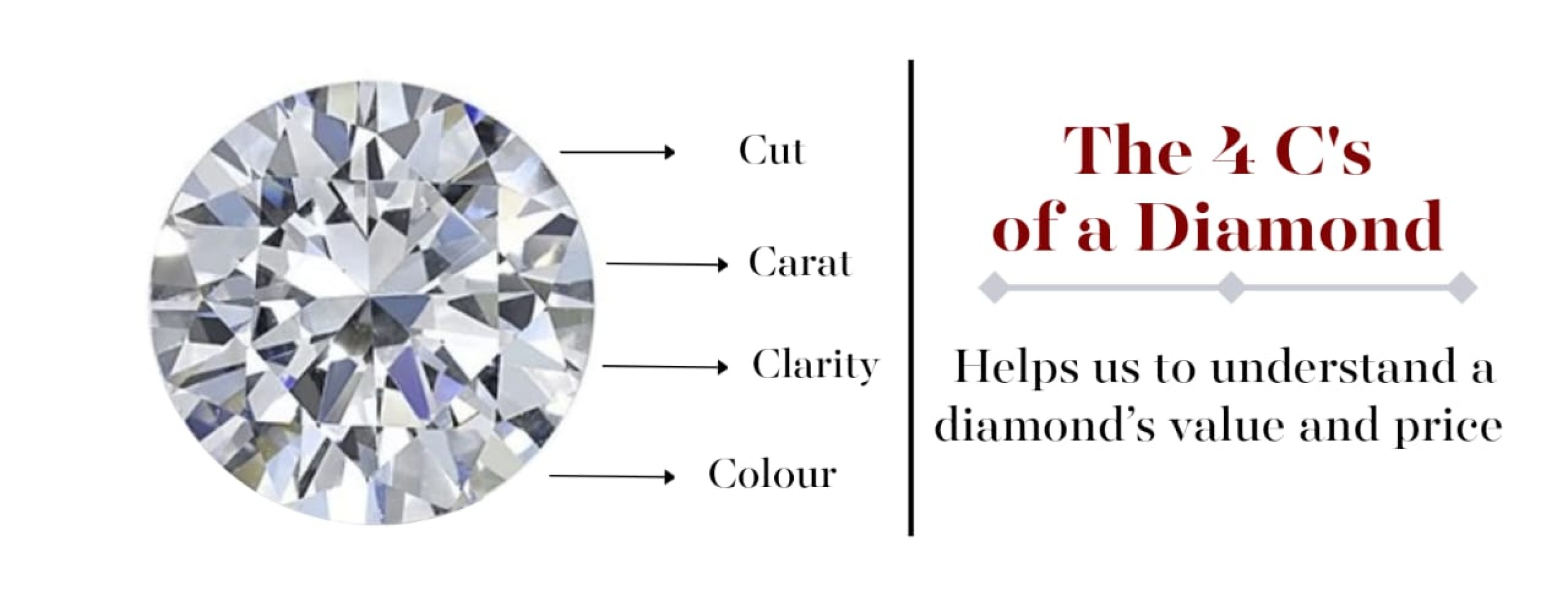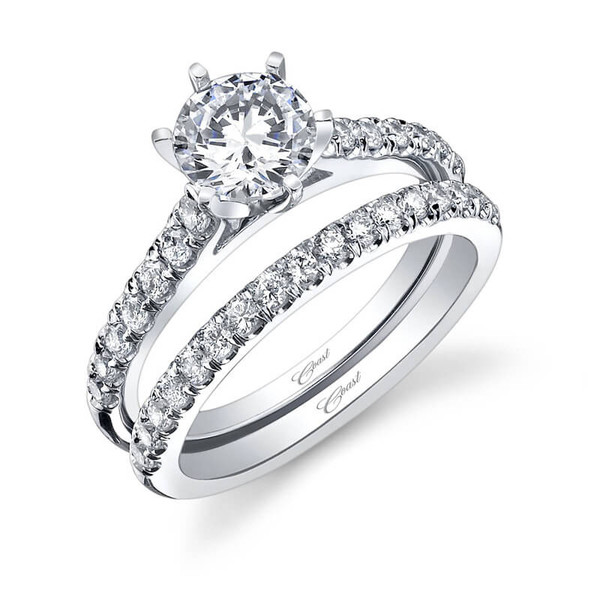Jewellery Blog
Let us know about jewellery

The 4Cs of a Diamond
The 4Cs of Diamond Quality is the universal method for assessing the quality of any diamond worldwide. Gemmologists and diamond experts evaluate and grade diamonds. They help us to understand a diamond’s value and price. The 4Cs for describing diamonds are Colour, Clarity, Cut and Carat Weight.
Diamond colour is graded in terms of how white or colourless a diamond is. Normal colour diamonds vary from colourless to light yellow and the grades are D to Z, with D being the most colourless, and Z containing noticeable brown or yellow tint. D coloured diamonds are the most prized and valuable.
D to F: Colourless
G to J: Near Colourless
K to M: Faint Yellow
N to R: Very Light Yellow
S to Z: Light Yellow
Fancy colour diamonds are diamonds with colour that extend beyond the Z range. Fancy colour diamonds are extremely rare, compared to regular diamonds and they come in red, green, purple, and orange (most rare), pink and blue (less rare), yellows and browns (most common).
Common fancy colours are typically less valuable than rarer ones. In fancy colour diamonds, the colour is the most significant value factor. Even diamonds with many inclusions and a low clarity grade are highly valued by connoisseurs if they exhibit a beautiful colour.
Natural diamonds are the result of carbon exposed to tremendous heat and pressure deep in the earth. This process can result in a variety of internal characteristics called ‘inclusions’ and external characteristics called ‘blemishes’.
Diamond Clarity measures a diamond’s purity and it refers to the absence of inclusions and blemishes. Clarity grades are given depending on the number, size, nature, and position of blemishes and inclusions, and also how these affect the overall appearance of the diamond. A diamond having less blemishes and inclusions will have a higher value.
Gemmologists grade a diamond by examining the diamond under 10x magnification using a "loupe", or a microscope.
A diamond with no inclusions visible to the naked eye are called “eye-clean” diamond.
Diamond cut means how well a diamond’s facets (flat surfaces cut onto a gemstone and arranged in a geometrical pattern) interact with light to create desirable visual effects. Of all the diamond 4Cs, Diamond cut is the most complex and technically difficult to analyse and grade.
The description of the Cut Grade on a grading report is subdivided into: Cut grade, polish and symmetry.
Each of these are graded into 4 categories: Excellent, Very Good, Good and Fair.
• In Cut grade the proportions of the facets of a round diamond are evaluated for ‘brightness’ (Internal and external white light reflected from a diamond), ‘fire’ (the scattering of white light into all the colours of the rainbow) and ‘scintillation’ (the amount of sparkle a diamond produces).
- Cut grades are only given to round diamonds and not to "fancy shapes" (shapes other than round like oval, cushion etc.)
• In polish the quality of polish on the diamond facets is checked.
• In symmetry the diamond is graded on the basis of how precisely the various facets of a diamond align and intersect.
Diamond cut and shape are often confused and used interchangeably, but they are two distinct concepts.
Diamond cut means how well a diamond’s facets interact with light and it refers to a diamond's reflective qualities, proportions and symmetry. Diamond shape refers to a diamond's overall outline or external appearance when viewed from above.
The round brilliant-cut diamond is the most popular and traditional shape. The diamonds of other shapes are called fancy-shaped diamonds. Examples of fancy shapes are princess cut, emerald cut, cushion cut, Asscher cut, pear cut, heart cut, oval cut, marquise cut, baguette cut and radiant cut diamonds. These fancy-shaped diamonds are popular in engagement rings.
If you want a beautiful and distinctive design you can choose diamond shapes such as octagonal diamonds, trapezoids, half-moon, and trillion-cut diamonds.
Carat
Carat is the unit of measurement for weight of diamonds.
1 carat (ct) = 0.200 grams
Each carat can be subdivided into 100 ‘points.’
1 carat = 100 cents or 100 cents = 1 carat
(like 1 Rupee= 100 Paise, just as the Rupee and Paise are separated by a dot (.), cents like Paise is written to the right of the dot and carat like rupee is written to the left of the dot.
Traders use the term “pointer” in place of cents.
10 carat is written as 10.00 ct and 10 carat and 75 cents is written as 10.75 ct.
0.10 carat is also referred to as ‘10 cents’ or ‘10 pointer’, 0.50 carats as a ‘50 pointer’ or ‘half carat’, 1.00 carats ‘one carat’.
Generally, diamond price increases with diamond carat weight because larger diamonds are rarer and more desirable.
When choosing a diamond, consider the 4Cs: Cut, Clarity, Colour, and Carat weight. The Cut determines the diamond's brilliance, Clarity refers to the presence of inclusions, Colour defines how colourless the diamond is, and Carat measures its size. Understanding these factors helps you select the perfect diamond.
Ready to find your dream diamond? Explore our collection today and discover the perfect piece that suits your style and budget.



